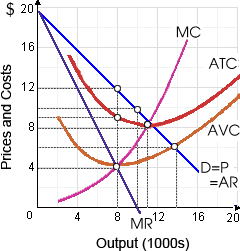That this firm can’t successfully price discriminate is most strongly indicated through the fact that: (1) the linear demand curve exceeds the marginal revenue curve for all outputs shown. (2) MR = MC maximizes profit. (3) total revenue total cost exceeds zero in this short run equilibrium. (4) MSB > MSC while profit is maximized. (5) All of the above.

I need a good answer on the topic of Economics problems. Please give me your suggestion for the same by using above options.